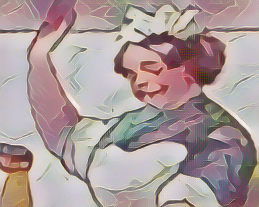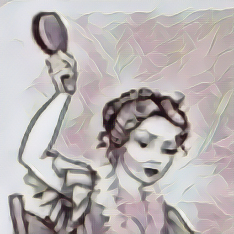I was utterly astonished when James confided in me that his Mother had taken to using the cane, a detail he revealed with a mixture of embarrassment and resignation. On several occasions thereafter, my curiosity compelled me to press him for further information, eager to understand the discipline in his household. He explained that, in his younger years, his Mother would administer the slipper for misbehaviour, much as my own Mother had done to us both that memorable night. However, six months prior, she had introduced the cane—a symbol of her unwavering commitment to proper conduct and moral upbringing. The cane, he said, was reserved for the gravest of infractions, and its presence in the home was a constant reminder that virtue and obedience were expected at all times.
“Sometimes,” James confided, his voice barely above a whisper, “she simply canes my hands. I must hold them out, palms trembling, and she delivers two or three sharp strokes to each. On other occasions, the punishment is more severe—she canes both my hands and my bottom, ensuring the lesson is not soon forgotten. Each time, she reminds me that discipline is an act of love, meant to guide me towards becoming a respectable young man.”
It was some three months later that I, too, would come to know the cane’s sting. I was staying overnight at James’s home, and as bedtime approached, we found ourselves caught up in childish mischief. A playful water fight erupted in the bathroom—an act of pure folly, in hindsight. Water splashed across the floor and walls, our laughter echoing until James’s Mother discovered the chaos. Her face, usually so composed, was set in stern disapproval. In that moment, I realised the gravity of our actions and the certainty of the consequences to follow.
“You will clean up this mess and then go to your room and wait,” she instructed, her tone firm yet not unkind. My stomach churned with dread, for I knew we were to receive a sound hiding. The anticipation was almost worse than the punishment itself, as we tidied the bathroom in silence, each of us lost in anxious thought about what was to come.
Ten minutes later, James’s Mother entered our room, the cane in her hand a clear sign of her resolve. “You are both very silly, naughty little boys,” she scolded, her voice carrying both disappointment and a sense of duty. We bowed our heads in shame. She turned to me and said, “Your Mother has told me I should cane you as well as James, for it is important that you both learn the value of good behaviour and the consequences of disobedience.”
With quiet composure, she instructed James to lower his pyjama trousers and bend over, his small bottom exposed and quivering in anticipation. The room was silent save for the sound of our nervous breathing. James’s Mother stood tall, her posture dignified and her expression resolute, embodying the firm but fair approach that defined her character.
She brought the cane down low and hard, each stroke landing with a sharp crack upon the lower part of James’s bottom—the very place where a boy sits. His skin quickly turned a vivid red, testament to the effectiveness of her discipline. Six firm strokes in all, and by the third, James was sobbing, pleading, “Mummy, stop – I’m sorry.” Yet she continued, ensuring the lesson was complete, her actions guided by a sense of responsibility rather than anger.
Afterwards, James was made to stand in the corner, forbidden to rub his sore behind—a further test of his self-control. When my turn came, I steeled myself, but the pain was far greater than any slippering I had ever received. My bottom throbbed and stung, and I wept openly, wishing I were older and no longer subject to such discipline. Yet, even through my tears, I understood that this was meant to teach us right from wrong, to instil in us the values our mothers held dear.
I, too, was sent to stand in the corner, where I remained for ten long minutes, reflecting on my misdeeds. Only then were we allowed to go to bed, the lesson lingering in our minds as much as in our bodies.
After this episode, my own Mother acquired a cane, declaring that if James was old enough to be corrected in this manner, then so was I. From that day forward, the cane became a symbol in our home—not of cruelty, but of a mother’s steadfast love and her desire to see her children grow into upright, moral individuals, prepared to face the world with integrity and respect for others.

























































